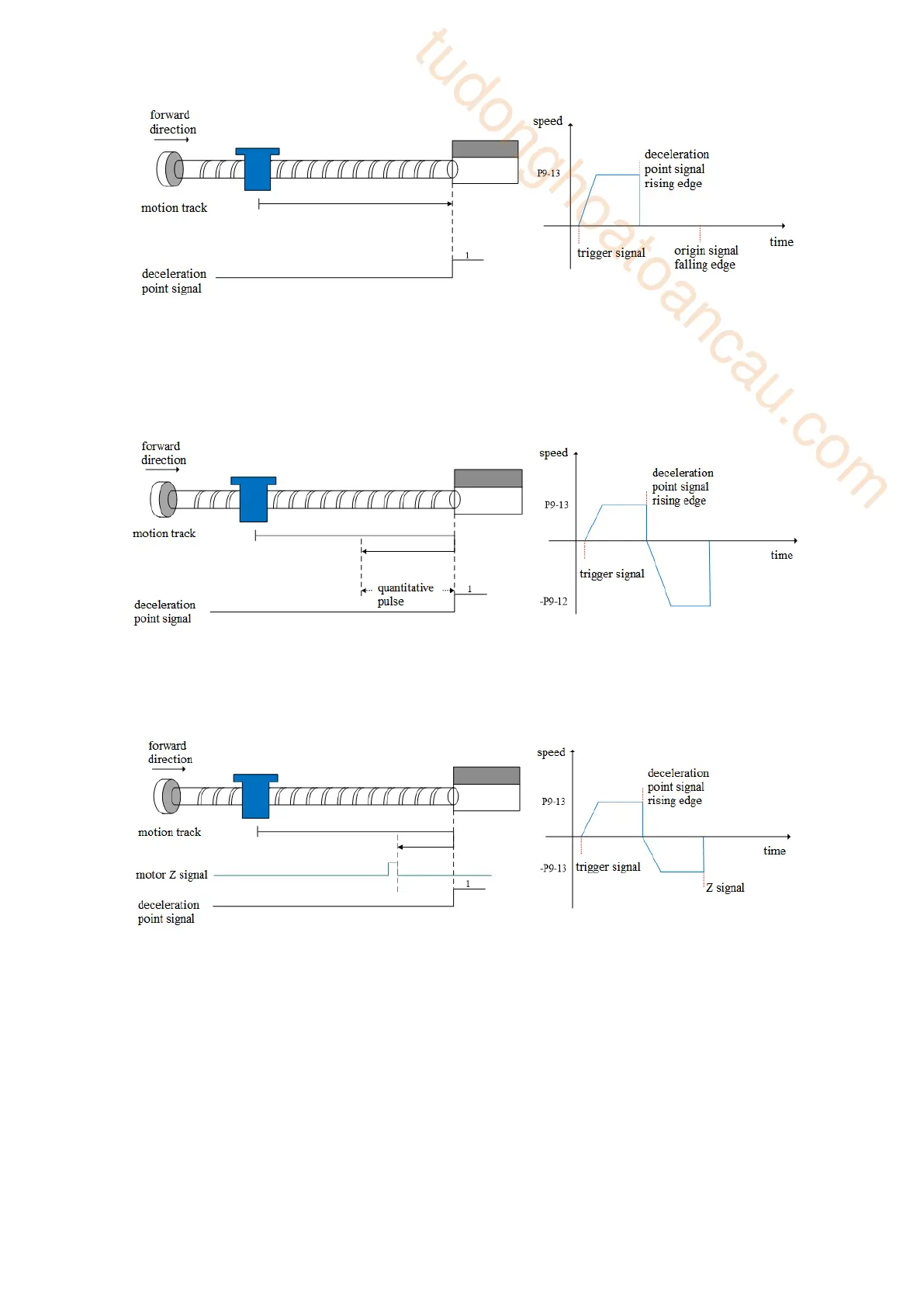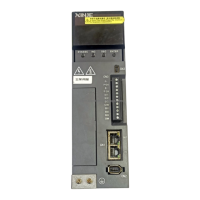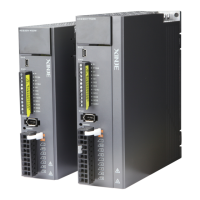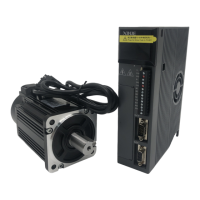(b) Z phase number (P9-11.0) is 0 and mechanical offset (P9-19, P9-20) is not 0:
The servo motor stops immediately. After it stops completely, according to the set number of
mechanical offset pulses, the motor reverse moves a quantitative pulse (P9-19, P9-20) at the speed set
by -P9-12 (homing high speed), and then the motor stops.
(c) Z phase number (P9-11.0) is 1 and mechanical offset (P9-19, P9-20) is 0:
Operate in reverse at the low speed set by -P9-13 (homing low speed), and then stop immediately after
encountering the rising edge of the first Z-phase signal.
(d) Z phase number (P9-11.0) is 1 and mechanical offset (P9-19, P9-20) is not 0:
Run in reverse at the low speed set by -P9-13 (homing low speed), then stop immediately after
encountering the rising edge of the first Z-phase signal, and then walk a quantitative pulse (it can run in
positive direction or negative direction, but it must be within the mechanical limit position) at the speed
set by -P9-12 (homing high speed) according to the set number of mechanical offset pulses after
complete stop, and then the motor stops.
8. Homing mode 7——reverse homing, deceleration point and origin are reverse mechanical
limit position (P9-11.2=7)
To use this mode, no need to connect POT, NOT and origin switch.
Firstly, the servo motor runs in reverse direction with the low speed -P9-13 (homing low speed). After
hitting the mechanical limit position, if the absolute value of torque reaches the upper torque limit of
P9-17 (touch stop homing mode torque threshold), and the absolute value of speed is lower than the set

